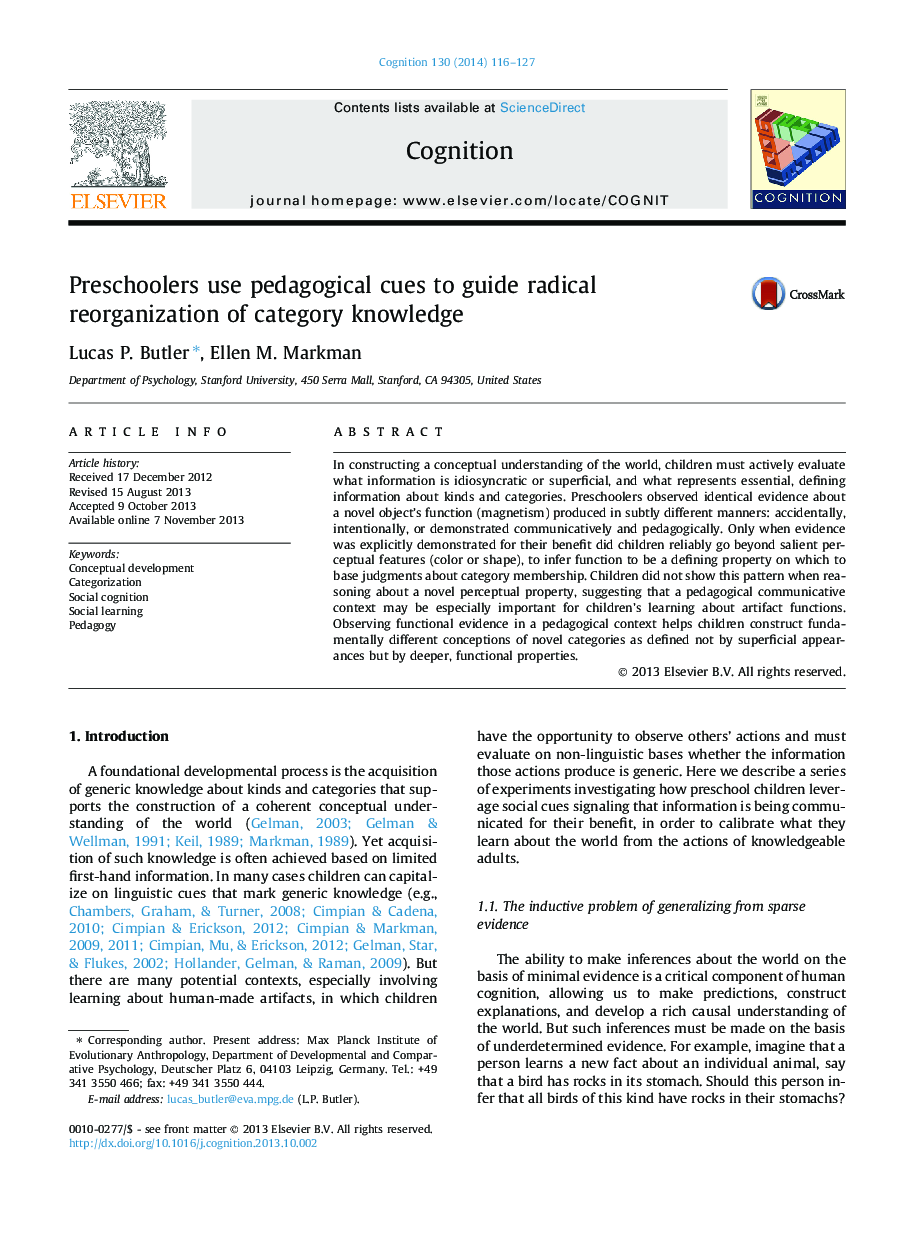| Article ID | Journal | Published Year | Pages | File Type |
|---|---|---|---|---|
| 10457769 | Cognition | 2014 | 12 Pages |
Abstract
In constructing a conceptual understanding of the world, children must actively evaluate what information is idiosyncratic or superficial, and what represents essential, defining information about kinds and categories. Preschoolers observed identical evidence about a novel object's function (magnetism) produced in subtly different manners: accidentally, intentionally, or demonstrated communicatively and pedagogically. Only when evidence was explicitly demonstrated for their benefit did children reliably go beyond salient perceptual features (color or shape), to infer function to be a defining property on which to base judgments about category membership. Children did not show this pattern when reasoning about a novel perceptual property, suggesting that a pedagogical communicative context may be especially important for children's learning about artifact functions. Observing functional evidence in a pedagogical context helps children construct fundamentally different conceptions of novel categories as defined not by superficial appearances but by deeper, functional properties.
Related Topics
Life Sciences
Neuroscience
Cognitive Neuroscience
Authors
Lucas P. Butler, Ellen M. Markman,
